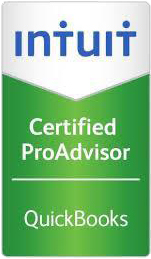Selecting your business successor is a fundamental objective when planning your exit strategy and requires a careful assessment of what you want from the sale of your business and who can best give it to you.
There are only four ways to leave your business and the more you understand about each one, the better the chance is that you will leave your business on your terms and under the conditions you want. With that in mind, here’s what you need to know about each option:
1. Liquidate It
In a liquidation the owners sell off their assets, collect outstanding accounts receivable, pay off their bills, and keep what’s left, if anything, for themselves. The primary reason liquidation is considered as an exit plan is that a business lacks sufficient income-producing capacity apart from the owner’s direct efforts and apart from the value of the assets themselves. For example, if the business can produce only $75,000 per year and the assets themselves are worth $1 million, no one would pay more for the business than the value of the assets.
Service businesses in particular are thought to have little value when the owner leaves the business. Since most service businesses have little “hard value” other than accounts receivable, liquidation produces the smallest return for the owner’s lifelong commitment to the business. Smart owners guard against this. They plan ahead to ensure that they do not have to rely on this last-ditch method to fund their retirement.
2. Sell It to A Third Party
While a sale to a third party too often becomes a bargain sale – and sometimes the only alternative to liquidation – this option just might be your best way to cash out if the business is well prepared for sale. In fact, you may find that this so-called “last resort” strategy just happens to land you at the resort of your choice.
Although many owners don’t realize it, most or all of your money should come from the business at closing. Therefore, the fundamental advantage of a third-party sale is immediate cash or at least a substantial up-front portion of the selling price. This ensures that you obtain your fundamental objectives of financial security and, perhaps, avoid risk as well.
A second unanticipated advantage in selling to a third party is the ability to frequently receive substantially more cash than your CPA or other business appraiser anticipated because the market place is “hot.” Finally, this may be the best option for a business that is too valuable to be purchased by anyone other than someone who has access to a considerable source of money.
If you do not receive the bulk of the purchase price in cash, at closing, however, your risk will suddenly become immense. You will place a substantial amount of the money you counted on receiving in the unpredictable hands of fate. The best way to avoid this risk is to get all of the money you are going to need at closing. This way any outstanding balance payable to you is “icing on the cake.”
3. Transfer of Ownership to Your Children
While most business owners want to transfer their business to their children, few end up doing so for various reasons. There are however, advantages that are worth considering. For example, transferring your business to your children can provide financial well-being for younger family members unable to earn comparable income from outside employment, as well as allow you to stay actively involved in the business with your children until you choose your departure date. It also affords you the luxury of selling the business for whatever amount of money you need to live on, even if the value of the business does not justify that sum of money.
On the other hand, this option also holds the potential to increase family friction, discord, and feelings of unequal treatment among siblings. Parents often feel the need to treat all of their children equally. In reality, this is difficult to achieve. In most cases, one child will probably run or own the business at the perceived expense of the others.
At the same time, financial security also may be diminished, rather than enhanced, and the very existence of the business is at risk if it’s transferred to a family member who can’t or won’t run it properly. In addition, family dynamics in general, may also significantly diminish your control over the business and its operations.
4. Employee Stock Option Plans (ESOP)
If your children have no interest or are unable to take over your business, there’s another option to ensure the continued success of your business: The Employee Stock Ownership Plan (ESOP).
ESOPs are qualified retirement plans subject to the regulatory requirements of the Employee Retirement Income Security Act of 1974 (ERISA). There’s one important difference however; the majority (more than half) of their investment must be derived from their own company stock.
Whether it’s due to lack of interest on your children’s part, an economic downturn or a high asking price that no one is willing to pay, what an ESOP does is create a third-party buyer (your employees) where none previously existed. After all, who more than your employees have a vested interest in your company?
ESOPs are set up as a trust (complete with trustees) into which either cash to buy company stock or newly issued stock is placed. Contributions the company makes to the trust are generally tax deductible, subject to certain limitations and because transactions are considered stock sales, the owner who is selling (you) can avoid paying capital gains. Shares are then distributed to employees (typically based on compensation levels) and grow tax free until distribution.
If your company is a stable, well-established one with steady, consistent earnings, then an ESOP might be just the ticket to creating a winning exit plan from your business.
If you need assistance figuring out which exit strategy is best for you and your business, please don’t hesitate to contact the office. The sooner you start planning, the easier it will be.




